Thinking about switching to solar energy at home? This guide has all the details you need. It covers costs, benefits, and how to install solar panels. Whether you want to cut down on carbon emissions, lower your energy bills, or gain energy independence, we’ve got you covered.

Key Takeaways
- Discover the different types of solar panel systems and their advantages
- Understand the costs and financial incentives associated with solar panel installation
- Learn about the site evaluation and planning process for a successful solar project
- Explore the step-by-step guide to installing solar panels, including permits and regulations
- Decide whether to connect your solar system to the grid or go off-grid
Understanding Solar Panel Installation
Switching to solar energy at home means knowing the different solar panel systems and their benefits. There are grid-tied and off-grid options, each fitting different needs and lifestyles. Let’s look at these choices and why solar power is a good idea.
Types of Solar Panel Systems
The main types of solar panel systems for homes are:
- Grid-tied solar systems: These connect to the local grid. Homeowners use grid power when needed and send extra solar energy back to the grid.
- Off-grid solar systems: These systems work alone, using solar energy stored in batteries for power.
- Hybrid solar systems: They mix grid-tied and off-grid parts. Homeowners use both grid power and stored solar energy as they need.
Benefits of Solar Energy
Switching to solar power at home has many benefits. Some key advantages are:
- Cost Savings: Solar energy can cut or even eliminate monthly electricity bills. This saves money over time for homeowners.
- Environmental Impact: Solar power is clean and renewable. It lowers carbon footprint and helps fight climate change.
- Energy Independence: Homeowners with solar panels use less grid and fossil fuel power. This makes them more energy independent.
Guide complet pour installer des panneaux solaires chez soi : coûts, avantages e
Installer des panneaux solaires chez soi est une bonne idée. Cela aide l’environnement et peut être bon pour votre portefeuille. Ce guide vous explique tout sur l’installation, des coûts aux avantages.
Coûts d’installation des panneaux solaires
Le coût d’installation dépend de plusieurs choses. Cela inclut la taille du système, la qualité des équipements, et la complexité de l’installation. En moyenne, un système solaire pour la maison coûte entre 10 000 et 25 000 dollars.
Ce prix inclut les panneaux, l’onduleur, le câblage, et le travail. Mais, il y a des subventions et des crédits d’impôt qui peuvent réduire ces coûts.
Avantages des panneaux solaires
Les panneaux solaires apportent beaucoup de bienfaits. Ils réduisent l’empreinte carbone et les émissions de gaz à effet de serre. Ils utilisent une énergie renouvelable et durable.
Vous pouvez aussi devenir autonome en énergie et baisser votre facture d’électricité. Ils augmentent la valeur de votre maison. De plus, les gouvernements offrent des aides financières pour l’énergie solaire.
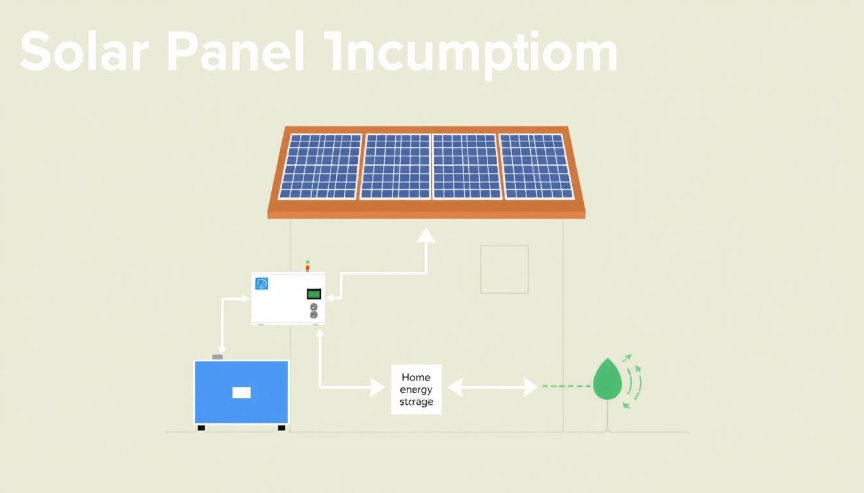
Site Evaluation and Planning
Before starting your solar panel journey, it’s key to evaluate your site and plan well. This detailed check ensures your solar system works well and efficiently.
Let’s look at important site evaluation factors:
- Sun Exposure: Check how much sunlight your property gets. Look for any shading from trees or buildings that might affect your panels.
- Roof Orientation: Find out your roof’s orientation. It should face south in the Northern Hemisphere or north in the Southern Hemisphere for best sunlight.
- Energy Consumption: Know your current and future energy needs. This helps size your solar system right for your home or business.
After gathering this info, plan your solar panel installation. This includes:
- Budgeting: Figure out the total cost of your system. This includes panels, inverters, wiring, and labor.
- Timeline: Make a realistic plan for installation. Include permits, inspections, and possible delays.
- Financing: Look into solar incentives and financing options. They can make your investment easier and cheaper.
By carefully evaluating your site and planning your installation, you’re ready for a smooth transition to renewable energy.

Choosing the Right Solar Panels
Choosing the right solar panels is key to powering your home with solar energy. Not all panels are the same. Knowing what to look for can help you pick the best ones for your needs and budget. Let’s look at the important things to consider when picking the perfect solar panels for your home.
Solar Panel Efficiency Ratings
Efficiency ratings are a big deal when picking solar panels. They show how well the panels turn sunlight into electricity. Panels with higher ratings make more power, which is great if you have a small roof.
Look for panels with ratings between 15% and 22%. These usually offer the best mix of performance and cost.
Solar Panel Warranty and Lifespan
The length and reliability of your solar panels matter a lot. Good manufacturers give warranties of 20 to 25 years. This protects your investment.
Also, top-quality panels last 25 to 30 years. This means long-term savings and a green solution for your home.
By focusing on solar panel efficiency ratings and the solar panel warranty and lifespan, you can make a smart choice. This will help you power your home with solar energy for many years.
Installation Process Step-by-Step
Installing solar panels at your home is exciting and rewarding. But, it’s key to follow the right steps for a successful and compliant installation. We’ll guide you through the installation process for solar panels, from preparing the site to connecting to the grid.
Permits and Regulations
Before starting your solar panel installation, learn about the permits and regulations in your area. You might need a building permit, electrical permit, or solar installation permit. Not following these rules can result in fines or even removing your solar system. So, make sure to research and follow all necessary rules and regulations.
- Site Assessment and Preparation: Check your roof or installation area to see if it can hold the solar panels. Look for structural strength, orientation, and shading.
- Panel and Mounting System Selection: Pick the right solar panels and mounting system for your energy needs, roof, and local rules.
- Electrical System Integration: Work with a licensed electrician to connect your solar panels to your home’s electrical system safely and correctly.
- Installation and Mounting: Install the solar panels and mounting system carefully, following the manufacturer’s instructions and best practices.
- Final Inspection and Activation: Have a final inspection with your local authority to make sure your installation meets all requirements. Once approved, you can start using your solar system and generating clean energy.
The installation process for solar panels can change based on your location and situation. It’s wise to talk to a professional solar installer or your local authorities for a smooth and compliant installation.
Connecting to the Grid or Going Off-Grid
When you install solar panels, you can choose to connect them to the grid or go off-grid. Each option has its benefits and things to consider. The best choice depends on your needs, local rules, and future plans.
Connecting Solar Panels to the Grid
Connecting your solar panels to the grid lets you sell extra energy back. This can earn you credits or cash. The grid also provides backup power when your panels don’t produce enough.
Going Off-Grid with Solar Panels
Going off-grid means your solar panels and batteries are your only power source. This gives you independence but requires a big upfront cost for batteries. You need to plan carefully to meet all your energy needs without the grid’s help.
| Connecting to the Grid | Going Off-Grid |
|---|---|
| Ability to sell excess energy back to the grid | Complete energy independence from the grid |
| Grid acts as a backup power source | Requires more extensive battery storage |
| Potentially lower upfront costs | Higher upfront investment for self-sustaining system |
| Ongoing utility bills and fees | No utility bills or fees |
The choice between connecting to the grid or going off-grid depends on your situation. Think about your energy needs and goals. Weighing the pros and cons will help you decide what’s best for your home and budget.
Conclusion
This guide on installing solar panels at home has given you a lot of information. You now know about the different types of solar panel systems and their benefits. You also understand how to evaluate and plan your site.
Choosing the right solar panels is important. We talked about efficiency ratings and warranties. We also covered the installation process, including permits and regulations. Whether you want to connect to the grid or go off-grid, you’re ready to make a choice.
By following this guide, you can start using solar power and lower your carbon footprint. Taking the first step towards sustainable living is exciting. We believe you’re ready to make your home more energy-efficient and eco-friendly.
FAQ
What are the different types of solar panel systems?
Solar panel systems come in two types: grid-tied and off-grid. Grid-tied systems connect to the electrical grid. This lets you sell extra energy back to the utility company. Off-grid systems work on their own and don’t need the grid.
What are the benefits of switching to solar energy?
Switching to solar energy saves money on your bills. It also reduces harm to the environment and boosts your energy independence. Solar power is clean and renewable, cutting down your carbon footprint.
How much does it cost to install solar panels at home?
The cost of solar panels varies. It depends on system size, location, and incentives. A typical home system costs between $10,000 and $30,000 before rebates. But, the savings on energy bills can make up for the cost over time.
What factors should I consider when choosing solar panels?
When picking solar panels, look at efficiency, warranty, and lifespan. More efficient panels might be pricier but last longer and work better.
Do I need any permits or approvals to install solar panels?
Yes, you need permits for solar panel installations. Check local rules and get the right permits before starting. Your installer can help with this.
Can I connect my solar panel system to the electrical grid?
Yes, you can connect your system to the grid. This is called grid-tied or net-metering. It lets you sell extra energy back to the company, reducing your grid energy costs.
What is the typical lifespan of a solar panel system?
Solar panels usually come with a 20-25 year warranty. But, they can last 30-40 years or more with good care. A well-maintained system can power your home for decades.


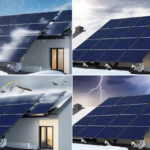
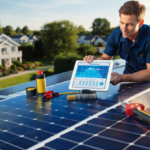
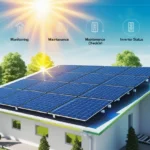
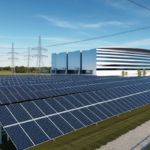
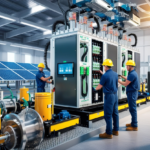



Hi, this is a comment.
To get started with moderating, editing, and deleting comments, please visit the Comments screen in the dashboard.
Commenter avatars come from Gravatar.